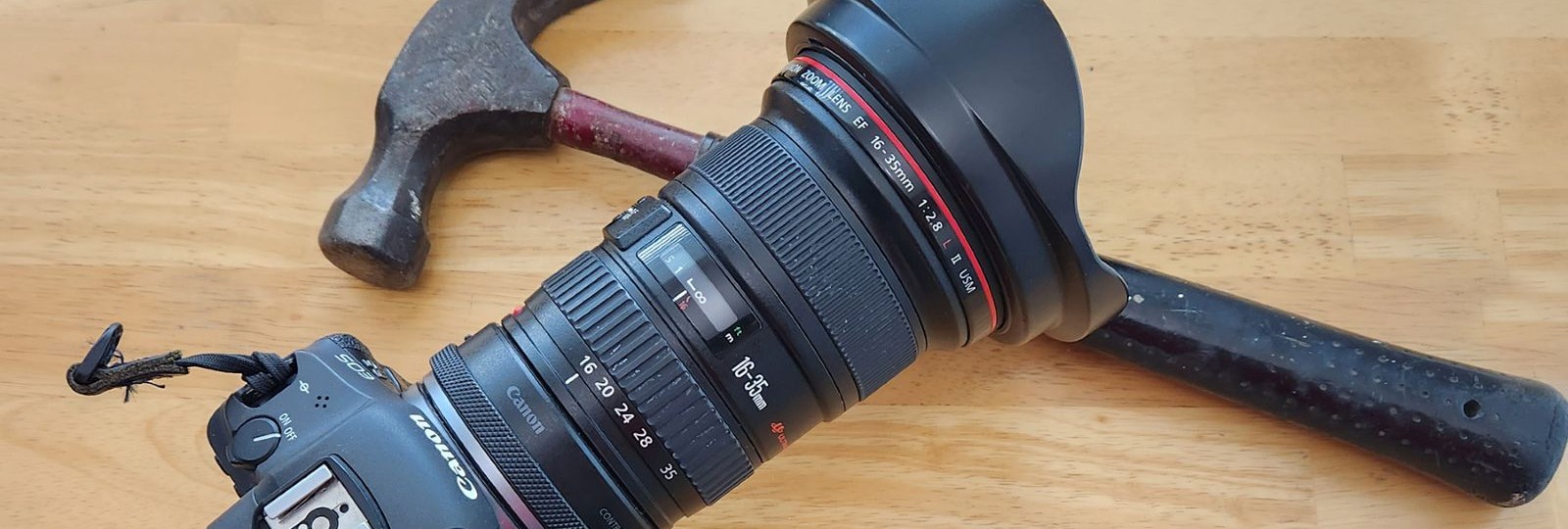By Gordie Elwell
Are you stuck in a rut?
Many of us have developed a certain “style” of shooting, even within our own favorite genre of photography. Landscape, portraits, cityscapes. We develop our own style, often with “tried and true” camera settings that have always worked in the past . . . so why change? Soon, all of our images begin to coalesce into the “same old-same old” folder in our hard drive. We begin to lose the enthusiasm in shooting that we once had . . . in short, we become “stuck in a rut”
The answer is to shake things up and go out with the specific intention of doing things differently. Let’s take aperture, for example. If all of our photos are shot with a closed down aperture for our landscapes, for example, perhaps we should try shooting at a wide open setting. The comfortable landscape setting of f/8 or f/11 that you have always used gives you great depth of field. It makes for terrific grandiose scenes where those mountains in the background are in focus to give your composure great context. But on your next outing, no matter where you go, make up your mind to set your aperture as wide as you can. Drive your depth of field as narrow as you can make it, then focus on isolating your subjects from the overall environment by zooming in and isolating with a shallow depth of field. Changing your camera setting to Aperture Priority will help you stick to this limit. Make up your mind to only take shots at f/2.8 or f/3.5, then set your camera to keep this setting. This will drive our selection of subjects and composition, and we begin the journey out of the rut.
Another trap is to just keep shooting subjects you have become good at shooting. Generally speaking, I’m talking about shooting the same genre, over and over. I have found this trap quite often in my own shooting. I really enjoy driving through Black Point Drive in the Merritt Island NWR. I can catch some really great bird images of all types. Blue herons, pink spoonbills, etc. I use my long lens and get some great shots. But my hard drive is now full of great bird images from MINWR. This is a great example of getting comfortable in a narrow genre, and repeating it over and over again. Try going someplace you rarely go to, and shooting just whatever you can find in that location. Add this to your aperture restriction, and you now have two components of your “usual shooting” that you have changed. Now look around and see how the world is different, and your photos are changing . . .
I’m sure you’ve guessed the next variable is your focal length. If, like me, many of your favorite shots are with a specific lens or focal length range, try exploring the other end of the spectrum. If you have one, use a fixed focal length lens. Or if you are using a zoom lens, pick out a focal length you rarely use and commit a few hours to just that setting. If you have a zoom lens with a wide range of zoom settings for example, try a little masking tape. Select the focal length you want to explore, and use a piece of masking tape to “lock in” that setting, preventing you from instinctively spinning that lens ring to zoom in or out. Force yourself to look at the world at that new focal length, and watch your perspective expand.
A note on using a zoom lens . . . Zooming is where we need to be aware of what we want our final image to look like. If we stand in one spot and zoom in or out with our zoom lens, all the elements in the scene will remain the same, relative to each other. We are literally just capturing a larger or smaller image (hence the term “zoomed in”). If, however we walk in closer or walk further out relative to our subject, we will notice the various elements in our composition move in or out of the image as we walk ourselves in closer or further away. Often you will hear the phrase “zoom with your feet” when we move closer or further away.
Lastly, start thinking about black and white. You will notice I did not say “shooting in black and white”. Many cameras allow you to select B&W for saving the file. My recommendation is to always shoot in color, but post process to black and white. Have this in mind as you shoot. Scenes with no dynamic range will appear flat in B&W or complex scenes that need colors to differentiate image components, B&W may not be the best display options. However, when there is plenty of contrast, simplicity and shapes or patterns, B&W post processing may give you some really great results!
After a few outings where we change some of these parameters, we will notice in our “usual” shooting, we have expanded our skill set, and remarkably even those “same old-same-old” captures will take on a new quality, since we have “learned” from our experiences in changing things up, and now apply some of these new perspectives to our shooting.
